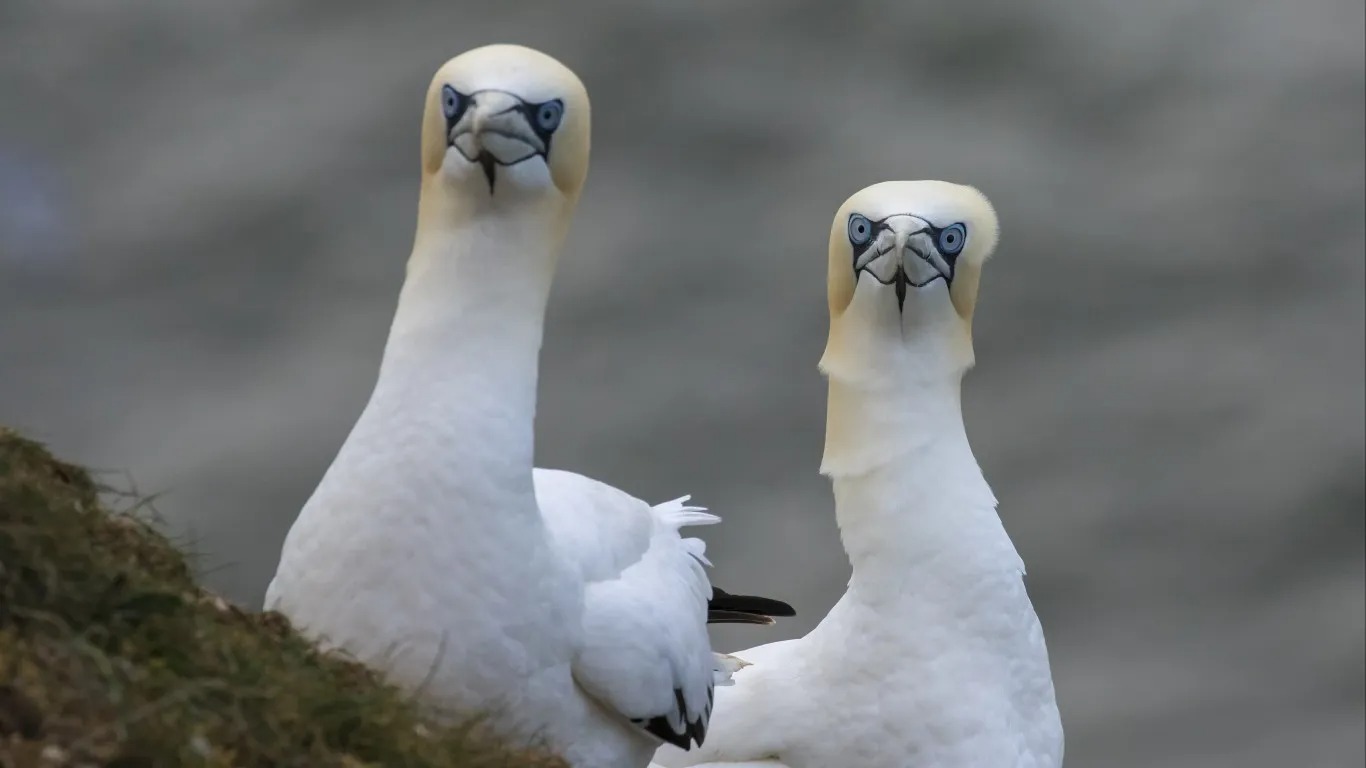
Recently, I boarded a small Dornier 228 plane, a German-made 19-seater, short-takeoff-and-landing aircraft that serves the island of Alderney, one of the British Channel Islands that lie just off the coast of France, and where my family has vacationed since the ‘50s.
Just a few moments after we lifted off the alarmingly short runway perched on the cliffs of the three-square-mile speck of land just seven miles from the French coast, I looked out and saw the incredible sight of Les Etacs, two large offshore rock formations almost completely covered in white gannets, a large, comparatively rare bird that has made the outcrops its most southern colony.
At the same time, the plane was buffeted by the strong winds that often sweep across the island, something that has left much of its vegetation bent into cowering shapes. And therein lies a tale.
For Alderney is blessed with two potential sources of renewable energy — the aforementioned wind and the tides between the island and France, which are the second strongest in the world. I have written about the potential of those tides before, a long saga of broken dreams that now seems on the verge of reality due to a French company’s plan to install tidal turbines on the Normandy side of the swirling strait.
And so now Alderney’s attention has turned to its considerable wind potential, with the talk of offshore turbines being installed near it and the other islands. In this regard, it would be following the example of the British mainland, which is the producer of the largest amount of offshore wind energy in the world (after China).
Which brings us back to the birds. For Alderney is not only home to those gannets, but also dozens of other species, most notably colorful — and oh-so-cute — puffins, which live on another offshore colony called Burhou (where you can see them via a webcam set up by the local wildlife trust). It is also a waystation for many migrating birds making the trip back and forth from Europe to the British Isles and Scandinavia.
And it is these birds that potentially stand in the way of the wind turbines, which are also planned for the waters near the main islands of Jersey and Guernsey, where there are also considerable avian populations, though not on the same scale as Alderney.
The issue of birds and wind turbines is not new, both for offshore and land-based wind installations, and has led wildlife advocates — who most often are also fans of renewable energy — to oppose many proposed projects. But there are some partial solutions, as detailed by Dutch company Robin Radar Systems: Radar to spot flocks of birds and enable operators to temporarily stall the turbines; painting the turbine blades black, which reduces so-called “motion smear,” which makes whirling turbines less visible. There is also the use of cameras to detect bird movements and noise deterrents (which would not go down well in peaceful Alderney).
I’ll be keeping my ear to the ground when I return again to my favorite place on Earth.
Abracadabra! COP28 chief hires pricey PR gurus.
About 35 years ago, I was at a party in Boston mostly attended by journalists. After a while, I and another ink-stained wretch — with another person listening in — were discussing a second-rate editor at my paper who had a side gig as a journalism professor, when my conversation partner pronounced that “If you can’t hack it in journalism, you teach it. And if you really can’t hack it, you work in public relations.”
It was then that I asked what the third person did for a living. “Public relations,” she said, thus producing two very red faces.
I thought of this embarrassing moment when I read that the United Arab Emirates, which has faced a barrage of criticism in light of being a huge fossil fuel producer while also heading up the presidency of the upcoming COP28 climate conference, has hired a high-powered American PR firm to punch back at the bad publicity.
The company, First International Resources, is not coming cheap, reports Middle East Eye, having filed a contract with the U.S. Department of Justice under lobbying rules for foreign agents with a monthly retainer of $100,000 for six months in addition to other undisclosed fees, with the agreement aiming to “to strengthen the overall reputation and standing of the UAE, His Excellency Dr Sultan Al Jaber and Cop28 among Western audiences” as well as aiming to “effectively inoculate” Jaber and COP28 from any “potential criticism” while seeking to promote the UAE as a leader in decarbonization efforts.
Jaber is the minister of industry and advanced technology of the UAE, CEO of the Abu Dhabi National Oil Company, chairman of Masdar (the UAE’s state-owned renewables company) and just happens to be the president of COP28.
He certainly needs a polish, with news coming in from The Guardian that the UAE has failed to report its emissions of the powerful greenhouse gas methane to the UN for almost a decade, unlike other Middle Eastern oil states including Saudi Arabia, Kuwait and Oman.
What’s next? Well, maybe Jaber might be tempted to hire an online influencer or two, thus aping several oil companies that have engaged the services of TikTok stars, such as the Philippines’ grandmotherly “Mama Nora,” who, according to investigative climate website DeSmog, is shilling for Shell $SHEL and is among 100 influencers worldwide who have used their platforms to promote fossil fuel firms since 2017.
Another example is Conoco $COP , which paid a nail artist and content creator named Lizzy to post sponsored videos last year. The videos received more than a million views across TikTok and Instagram, where she has a combined 660,000 followers.
There were, of course, no online influencers at that long-ago Boston party. I wonder what my too-talkative pal might have thought of them?
I hated my electric utility. Now, not so much.
Being a weekend resident of Connecticut, I am a customer of Eversource $ES , the largest utility in New England. Until now, I have not been a fan — its rates for electricity and the accompanying fees to deliver it are among the highest in the nation. In addition, it is often slow in fixing power lines after weather events.
Now, however, I am feeling warmer towards it. Why? Because the company — which was known as Connecticut Light and Power when I first started being a customer — has pulled out of the powerful American Gas Association, a lobbying group that environmentalists say has been instrumental in blocking efforts to address climate change around the country. Talking about the move, Eversource spokesperson Chris McKinnon told Boston NPR outlet WBUR that the utility canceled its membership as part of an effort to prioritize “decarbonization” and reduce planet-warming emissions.
According to the station, Eversource’s departure appears to mark the first time a major utility has left the influential trade group over diverging climate agendas, a move some energy experts call “unprecedented” — and possibly could ignite a movement.
“I think it’s very possible that we see more utilities follow the lead of the Eversource,” Charlie Spatz, a researcher with the Energy Policy Institute, a utility watchdog group, told WBUR.
And Leah Stokes, a professor at the University of California Santa Barbara, was even more enthusiastic, saying, “To have a gas utility wake up and say, ‘you know what? We don’t want to be part of the problem anymore. We want to be part of the solution’ — that’s a really hopeful trend.”
As for the money Eversource previously spent on the gas association dues, it has been redirected to more-progressive groups, according to McKinnon, including the International Ground Source Heat Pump Association, MIT Future Energy Systems Center and AICHE H2 Safety, which promotes hydrogen. The company is also involved in a $14.7 million pilot geothermal project in Massachusetts and mixing biogas — methane that comes from landfills, animal manure or sewage treatment plants — into its pipelines.
Great stuff. I won’t be feeling so aggrieved when I pay my next bill.
(A native of England, veteran journalist Matthew Diebel has worked at NBC News, Time, USA Today and News Corp., among other organizations. Having spent much of his childhood next to one of the world’s fastest bodies of water, he is particularly interested in tidal energy.)





